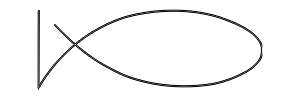
Scientific name: Acropora
Size: From 6 inches to 10 foot
Color: Brown, beige, blue or red
Distinguishing feature: Bushy and branchy or in horizontal plate. Composed of a multitude of excrescences like fingers.
Where did we see it: Bali and Gili, Zanzibar, Thailand, Mayotte

Scientific name: Acropora
Size: From 6 inches to 10 foot
Color: Brown, beige, blue or red
Distinguishing feature: Bushy and branchy or in horizontal plate. Composed of a multitude of excrescences like fingers.
Where did we see it: Bali and Gili, Zanzibar, Thailand, Mayotte
Acropora coral is one of the most present on the planet. It has a multitude of different types (about 180) and it is difficult to differentiate them without taking several pictures from different angles and at different distances from the coral.
To develop themself, these corals need warm water (over 20°) and lipid water with a lot of light. This allows them to be one of the corals with the greatest growth, about 3.2 inches / year.
Its skeleton is fragile, so be careful if you put your fingers on it!!!
Depending on their environment, these corals may change color (blue or red for example).
This coral is not threatened, even if the population decreases. But some of its species are on the red list : they are very exposed to the phenomenon of coral bleaching.





Some sharks can stay motionless on the sand (white tips reef sharks, nurse sharks, etc.).
These sharks don't have to swim to bring oxygen to their gills like other sharks (grey, hammerheads tc.)
Turtles are in economy mode when they are sleeping. If they are woken during night, they may not have enough air to return to surface.
So, please be careful during night dives!
The whale shark is the largest fish in the world!
Some whales are larger, but they are mammals, not fish!